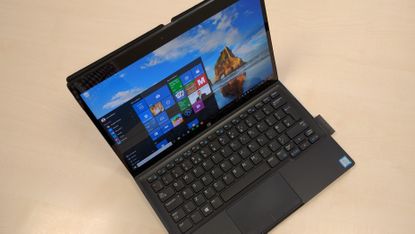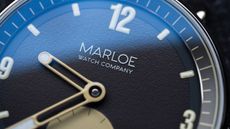The world is waking up to the potential of hybrid Windows tablets thanks to Microsoft's Surface Pro 4 and Surface Book, and Dell is one of several companies looking to ride the wave.
The PC maker has freely admitted that the XPS 12 was inspired by Microsoft's Type Cover-toting tablets, but on first impressions the Windows 10 device is much more than just another Surface Pro clone.
Packing the latest in connectivity options, a 4K Infinity Display (a first for a 2-in-1) and a keyboard that'll make your fingers wonder what they're done to deserve such a good time, the XPS 12 is one of the best hybrids around.

XPS 12 Design
Constructed of magnesium-alloy, the XPS 12 is made up of an 11.5-inch tablet part and a sturdy laptop-like keyboard base. The tablet part docks to the base using magnets, allowing you to use it in laptop mode.
However, unlike the Surface Pro 4 or Lenovo's IdeaPad Miix 700, there's no kickstand on the rear, so you can't adjust the angle of the display or use it in portrait orientation when docked. This is a bit limiting when you're using the XPS 12 on a train or plane - you just can't get the screen at the right angle.
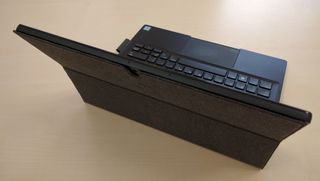
The magnets usually make docking quick and painless; however, while solid, the connection can be broken if you're careless. The dock points do need to be made more secure.

The magnets also keep the tablet part in place when it's laid flat against the keyboard for transportation. While a little chunkier than the Surface Pro when positioned like this, it means the display is well-protected in its metal cocoon.
XPS 12 Features
One of the XPS 12's standout features is its 12.5-inch display, a sharp 4K Ultra HD touch panel with a 3,840 x 2,160 pixel-resolution.

According to Dell, it uses Sharp's Indium gallium Zinc Oxide (IGCZO) panel tech to achieve 100% colour gamut accuracy. It is superb and pin sharp. Dell really does have some super mobile displays at the moment.

You may be wondering how Dell managed to cram a display that size into an 11.5-inch tablet. The answer lies in the same Infinity Display tech used in the XPS 13 and XPS 15 that slims down the left and right bezels to nearly nothing. Dell is also offering the XPS 12 with a 1080p display if you prefer.
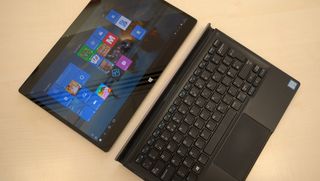
XPS 12 Specifications
As with the Surface 3 and the entry-level Surface Pro 4, the XPS 12 uses Intel's fanless Core M processor. So, while it may not be as powerful as tablets sporting Intel's Core-series CPUs, it runs quiet and cool in the absence of an internal fan.

The XPS 12 is available with a dual core, 1.1GHz Intel Core m5-6Y57 processor in all configurations, backed up by 8GB of RAM and either 128GB or 256GB of SSD storage. We haveto say we were very pleasantly surprised with the performance of this chip. Core M doesn't exactly scream performance, but we performed some pretty chunky tasks and drove a second display quite happily (Intel's integrated HD Graphics 515 can support 4K content on the XPS 12's own display or an external Ultra HD monitor).
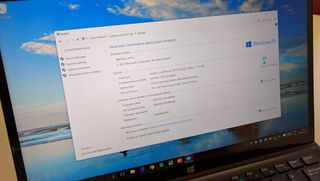
OK, it's no match to, say, a Core i5 or Core i7 in terms of grunt - especially if you're using software like Adobe Creative Suite - but you'll find it perfectly happy performing most tasks. After all, the Apple Macbook also uses a Core m5 processor and the same integrated Intel graphics.
On the connectivity front, the XPS 12 features 802.11ac and Bluetooth 4.1. Ports include two USB Type-C connections sporting Thunderbolt 3 tech (one for power and the other for a USB-C cable-docking station). They're paired with a full-sized SD card reader, alongside a headset and input-output port. In the box you also get a USB-C to USB-A connector - an accessory you certainly won't want to lose. We pretty much had to leave it connected all the time.
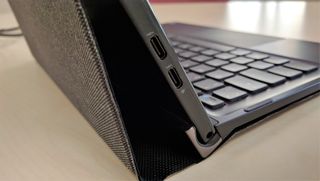
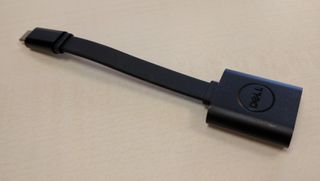
XPS 12 Usability
The first wave of hybrid tablets from a few years back suffered from cramped keyboards with tiny keys. The XPS 12 is lightyears ahead, packing one of the most comfortable keyboards I've yet to experience on a hybrid device's accessory.

Its chiclet-spaced concave keys are well-spaced for such a compact device and slightly dip in the middle. Better yet, they give off a generous amount of travel without feeling cheap or spongey.
The feeling is similar to typing on a Lenovo ThinkPad keyboard, something I've never experienced on a hybrid tablet's accessory. Of course, you can use your fingers to interact with the XPS 12's touchscreen or use a Wacom-branded stylus (which isn't included) to draw on its glass panel.
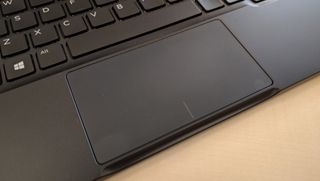
T3 verdict
Like Dell's other revamped XPS devices, the XPS 12 is the equivalent of an office worker who turns up to a party in their suit — it doesn't scream excitement, but it sure puts in the effort to give you a good time.
Its snappy magnetic action makes it quick and easy to whip it out and get down to business on its comfortable keyboard, and anything you do on it looks gorgeous thanks to that pixel-packed 4K display.
The only potential drawback to the XPS 12 is that Core M processor inside, which is ok for browsing the web and filling in spreadsheets but may not be a great fit for more processor-intensive work - such as editing video or resizing large image files.
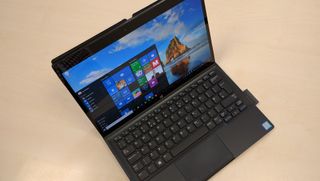
Even if you do need to do that kind of work from time-to-time, the XPS 12 would still make for a great secondary device for taking on the road or using as a backup to another machine.
Being the first 2-in-1 tablet with a 4K display alone makes the Dell XPS 12 worth a look-in, making its smooth typing action and dual USB-C ports the icing on the cake.
Also check out 10 best Windows 10 laptops, tablets and 2-in-1s: which one is right for you?
